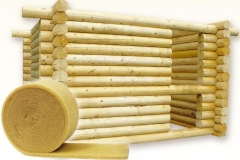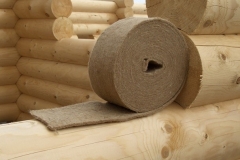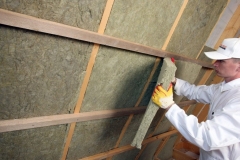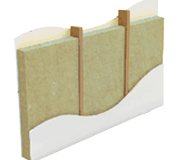Natural insulation – materials of the XXI century – LENIZOL, DZUTIZOL.
In recent years, natural environmentally friendly materials have been increasingly used in construction. Refers to this as directly to the technology of erecting the skeletons of cottages and houses, and to all kinds of insulation. Materials of the twenty-first century are flax, jute, hemp.
LLC “Enterprise nonwovens” in their activities give preference to them.
Linen insulation promotes excellent evaporation of excess moisture through walls and roof, thus establishing the optimum wet-heat regime in the room. Among other things, flax has high antibacterial properties. It does not rot and mold, due to the free condensation of moisture. Linen insulation has one of the best indicators for thermal conductivity and sound absorption, providing reliable protection of your home from heat, cold and noise. Proper insulation helps reduce energy consumption and, as a consequence, heating and air conditioning costs.
Advantage of natural insulants
• Absence of volatile organic compounds (eg phenol, which can release harmful vapors even at room temperature without additional heating).
• Regulation of humidity, due to which the problem of condensation is solved.
• Longer service life, more than 60 years. It does not settle, it is not susceptible to damage by fungus, mold and pests.
• Provides reliable thermal protection due to low coefficient of thermal conductivity.
• Has increased resistance to temperature changes.
• Significantly reduces the noise level in the room.
• Supports comfortable indoor climate. It does not collect condensate, passes steam and unhindered the output of moisture in the joints of the structure.
• Environmentally friendly material. Does not release toxic substances, does not cause allergies. Safe for health.
• Easy to install in the design, does not require special protection (clothing, respirator, glasses, gloves)
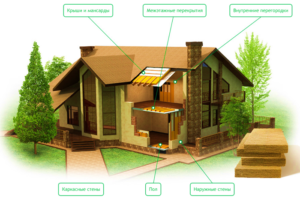
Warming of internal walls
Insulation from inside the house is an excellent opportunity to keep the heat inside the home. The main purpose of this process is to increase the thermal insulation characteristics of the building’s ceilings, to exclude the penetration inside the cold rooms from the outside and the occurrence of drafts.
Warming of pitched roofs, attics and attics
Every schoolboy knows that warm air rises. Based on this, it can be assumed that much of the heat that “loses” the house, disappears through the roof. Correct warming of the roof guarantees the functioning of the house.
Warming of floors and floors
The floor is one of the coldest parts of the house. In particular, this applies to the first floors of buildings, as well as country wooden houses. This is due to the fact that cold air rushes to the bottom, and drafts are also blowing from under the floor. Therefore, to reduce the heat loss in the house and get a warmer floor is carried out its insulation.



